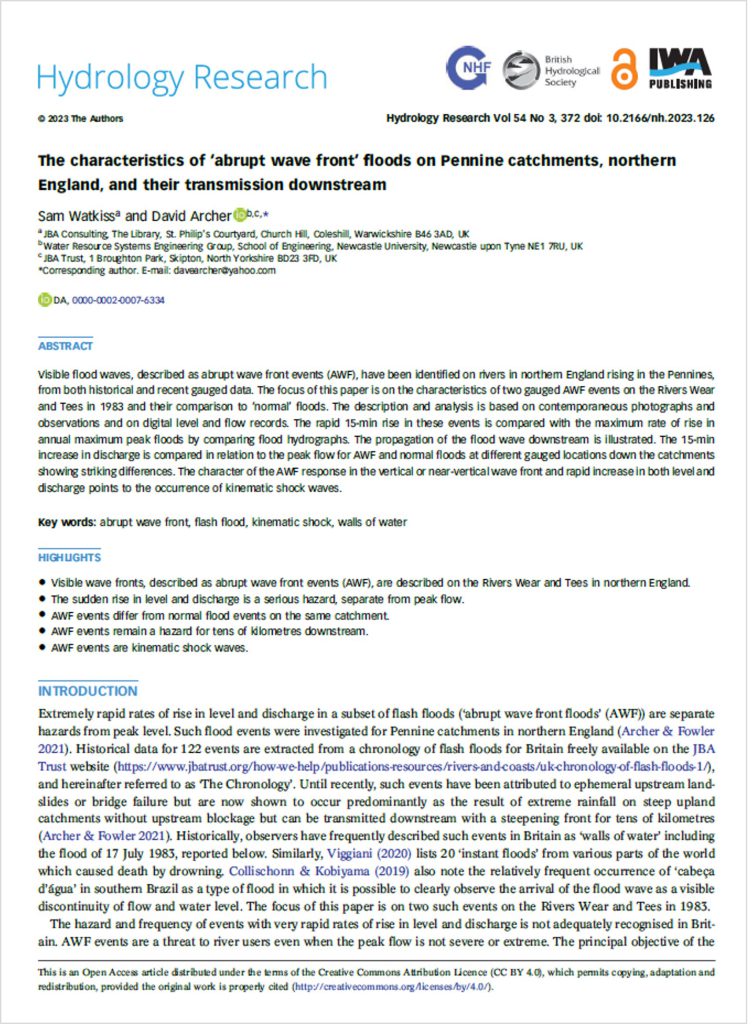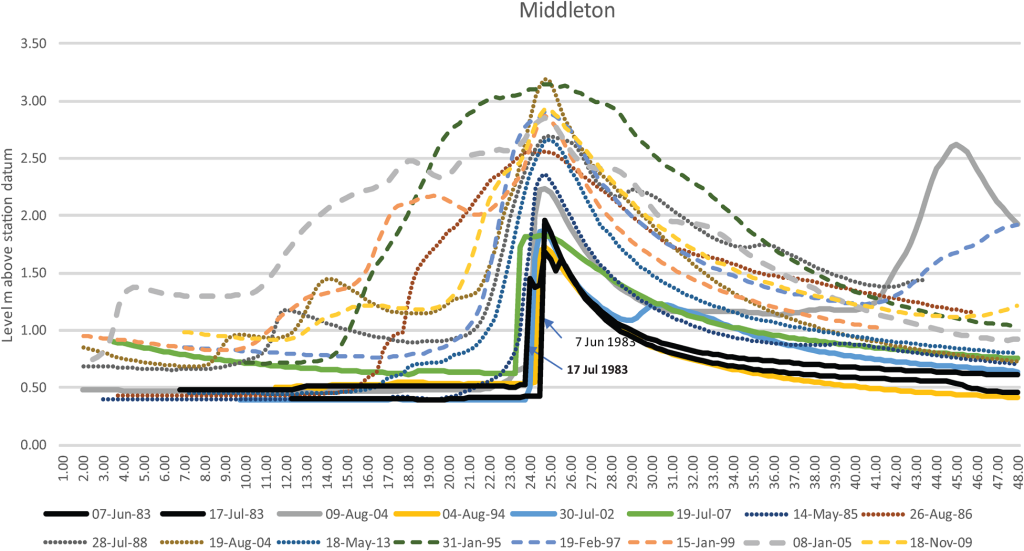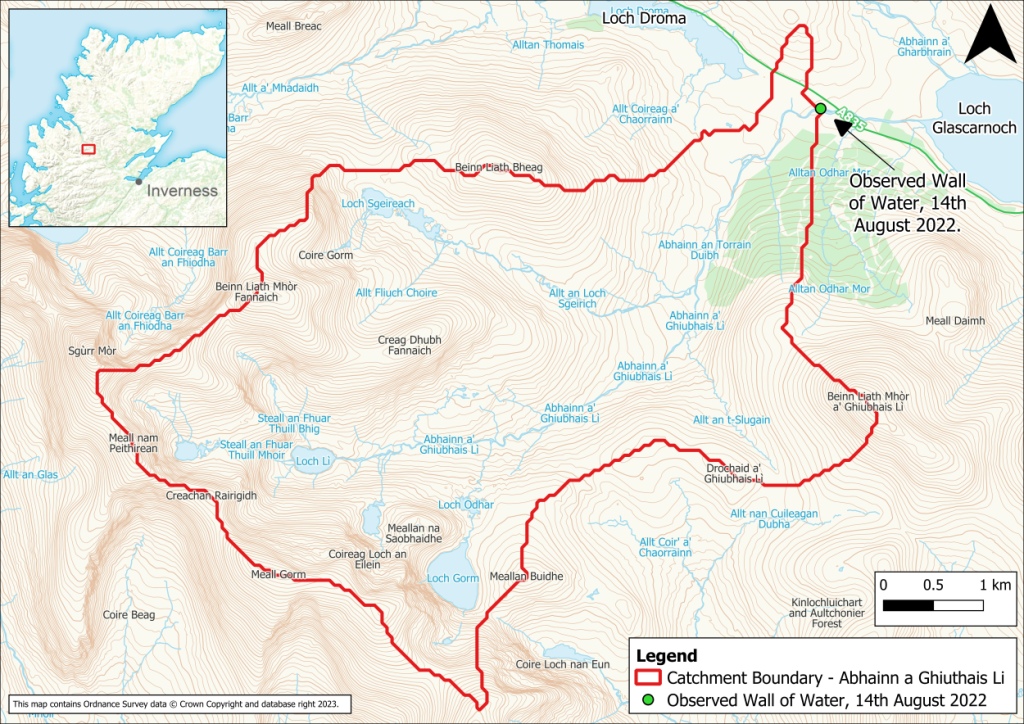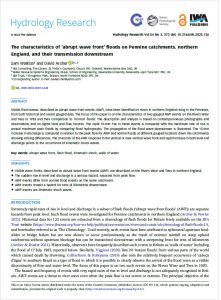Characteristics of ‘abrupt wave front’ floods
New research explores events in northern England where river water levels rise very rapidly and are extremely hazardous to river users.
‘Abrupt wave front’ floods (AWF), also know as Walls of Water (WoW) or flash floods, describe an extremely rapid rate of rise in level and discharge. They are a significant hazard to river users and are caused by extreme rainfall events on steep upland catchments which can then move downstream for tens of kilometres.
The video below captures a small AWF moving downstream on 14 August 2022 in the Fannich Hills catchment in Scotland after localised thunderstorms caused an extreme rainfall event high in the catchment.
Video credit: Thom Brown
Figure 1. Map showing where the observed AWF occurred and the catchment area that contributed to the event on 14 August 2022.
Abrupt wave front (AWF) flood events in the Pennines
 The characteristics and downstream transmission of AWF floods are described and analysed in a new paper published in Hydrology Research by Samuel Watkiss and David Archer.
The characteristics and downstream transmission of AWF floods are described and analysed in a new paper published in Hydrology Research by Samuel Watkiss and David Archer.
The paper combines research undertaken for Sam’s BSc Geography course at the University of Leeds, and work by David Archer. Sam was supported by JBA Trust for part of his placement year and dissertation.
Historical data for 122 events in Pennine catchments in northern England were extracted from the freely available British Chronology of Flash Floods. The paper focuses on two events on the Rivers Wear and Tees in northern England in 1983.
Analysis of the events shows a clear difference between an AWF event and a normal flood event on the River Tees.
The hydrograph profiles show a ‘near instantaneous’ rise in levels for AWF floods (bold lines), compared to a gradual approach to the peak for normal winter and summer maximum floods (dashed and dotted lines respectively).

Figure 2. Comparison of hydrographs between abrupt wave front events and ‘normal’ annual maximum peak flood events, centred on the flood peak. AWF are shown in bold, winter floods are dashed and summer floods are dotted.
Conclusions
The authors conclude that AWF events floods are categorically different from normal floods on the same catchment. The Rivers Wear and Tees are not normally ‘rapid response catchments’ but they experience rapid response events on rare occasions. They recommend that the hazard and the risk to life from abrupt wave front events need to be taken more seriously for flood forecasting and warning procedures.
Resources
Contacts
Samuel Watkiss, JBA Consulting: samuel.watkiss@jbaconsulting.com
David Archer, JBA Trust and British Hydrological Society: davearcher@yahoo.com



